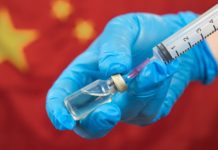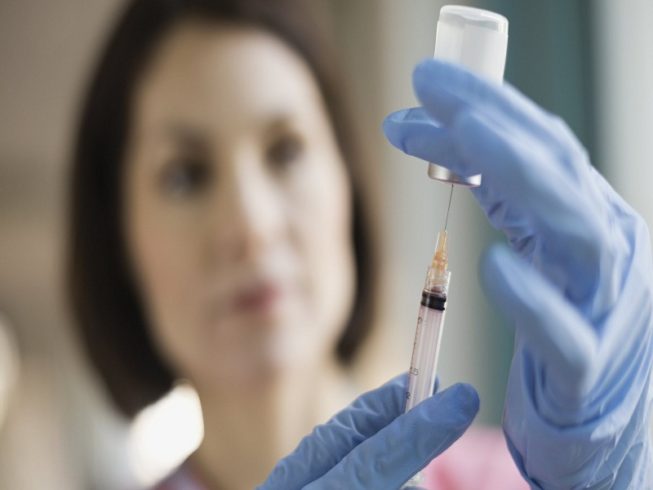The two most popular injectables used to transition are disappearing from shelves as one awaits re-approval by the FDA, but other factors remain murky
The voice on the other the end of the phone had an air of panic. It was one of Dr Carolyn Wolf-Gould’s trans patients, calling about the hormone injections she uses every two weeks to help her body become more feminine.
Only this week, the woman said, there had been no refills: “The pharmacist said something about a national shortage.”
This summer, thousands of trans women are placing the same call to doctors and pharmacists around the country. The US is in the midst of an acute shortage of the two most popular drugs trans women use to physically transition – with no guarantee of when the shortage will cease.
“We are bracing ourselves,” said Wolf-Gould, who runs a family practice focused on transgender people in Oneonta, New York.
Callen-Lorde, an LGBT health clinic in Manhattan’s Chelsea neighborhood, is also feeling the squeeze. In late July, the clinic’s weekly supply of injectable estrogen simply never appeared. The shortage will impact more than 900 patients at Callen-Lorde alone, staff said.
“This could be extremely disruptive,” said Dr Asa Radix, the clinic’s director of research and education. “Some of these women have been on their formula for a very long time. Imagine all of a sudden you’re told you can’t get the medication you’re been using maybe all of their lives. So it’s not just a matter of, does the alternative perform the same?”
In trans women, estrogen helps develop and maintain a feminized body, enhancing breast growth and redistributing fat. A sudden loss of the hormone can result in emotional changes; a long-term loss will cause those physical changes to slow down and even reverse. Health experts and trans women alike have called the injections “life-saving”. “It meant seeing me in my body for the first time,” said Kristen Aaquist, a California trans woman.
The shortage of injectable estrogen, first reported by Out, is projected to last at least into the fall. But even as manufacturers say supplies will be restored by October, healthcare professionals are dubious. “Last year, out of the blue, there was a shortage of the 40mL,” Radix said. “That dosage hasn’t been reliably available ever since, and physicians have been using the 20mL doses as a substitute.”
Now, both doses are in shortage across the country. It has left thousands of trans women on hormone therapy scrambling for alternatives and wondering when these life-altering drugs will return to pharmacy shelves.
“It’s a huge deal,” said Aaquist, who has relied on the shots to transition for more than two years. “It’s my very peace of mind. What I associate with the shots more than anything is, I finally can see myself when I look in the mirror.”
What I associate with the shots more than anything is, I finally can see myself when I look in the mirror
Kristen Aaquist
Driving the shortage of the two drugs – Delestrogen, the brand name, and estradiol valerate, its generic formulation – are factors that remain murky.
Delestrogen is running short because the manufacturer, Par Pharmaceuticals, contracted with a new company to synthesize the drug’s main active ingredient. The previous supplier, which Par would not name, had stopped making the ingredient for reasons Par would not specify.
But before Par Pharmaceuticals can sell a single dose of their new batch in the US, the Food and Drug Administration must approve the new supplier.
When that will happen is not clear. Andrea Fischer, a spokeswoman for the FDA, said the agency is working with Par and Perrigo and “awaiting additional information from the manufacturers”.
“The FDA recognizes this is an important drug, and will do whatever we can to help return the drug to the market for patients as quickly as possible,” she said.
In the meantime, it remains just out of reach. Par Pharmaceuticals has thousands of vials of Delestrogen ready to be sold, a spokeswoman said, as soon as the FDA gives its approval.
Perrigo, the manufacturer of the generic formulation, did not respond to requests for comment.
For reasons unknown, Wolf-Gould said, the shortage appears to be limited to the high doses of hormone injections used most frequently by trans women. The 10mL dose, used by postmenopausal women, has not been affected.
Wolf-Gould emphasized that there are proven alternatives to the injectable drug. While the shortage lasts, she and other providers are switching patients to pills and patches that provide estrogen in the same dose.
But each alternative comes with drawbacks. Estrogen in pill form is relatively inexpensive, Wolf-Gould said – a month’s supply retails at Walmart for $4 – but patients must remember to take the pill every day. It also carries a risk of blood clots that is higher in older patients.
The patch’s advantages include a steadier release of hormones. But the patch can fall off, and it can be prohibitively expensive to those who lack insurance coverage – which for many trans people is a constant reality. Although the federal government requires insurance companies to cover all transition-related services, trans individuals still report being denied coverage for their healthcare with alarming frequency.
Occasionally, accessing the drug in its injectable form is not just a matter of convenience but security.
“It might not be safe for some people to take the tablets every day where they live,” Radix said. “They may have roommates, or they may be living in a shelter. Taking the injectable at a clinic every two weeks mean no one has to know what medications they’re on. It means they don’t need to disclose quite so much about their trans status.”
Other patients who prefer the injectable drug insist the pills and patches don’t work as well. Both Radix and Wolf-Gould said they have never observed a difference between the various formulations, although Radix said: “It may be true for some.”
The shortage has some medical professionals worried that women will seek injectable estrogen from unregulated sources. A wealth of online pharmacies purport to ship the drug from overseas.
Radix recalls that the first time the drug was in short supply, one of his patients obtained what she thought were estrogen injections through a friend. At the woman’s next appointment, the results of her liver test set off sirens.
“We still don’t know what she took,” Radix said. “People can fill vials with whatever because they know people are desperate.” The patient gradually recovered.
In California, Aaquist has a few weeks’ supply of injections left before she must turn to either the pill or the patch. Both are still widely available, but the injectable shortage has healthcare providers rattled about even those supplies.
“We can tell ourselves it’s OK because there are alternatives,” Radix said. “But we could wake up tomorrow and find out those are in short supply as well.”

























